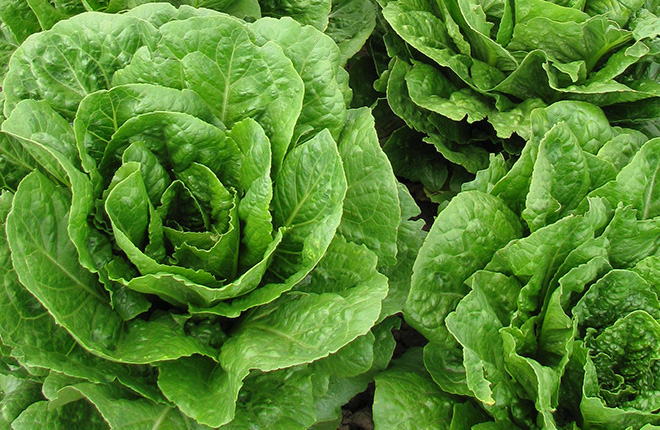16 New Lettuce Lines
Many of today’s consumers are striving to eat healthier by adding more fruits and vegetables to their diets. Salads are a popular way to do this, and salads usually involve lettuce as the foundation.
In fact, Americans are producing and eating a lot of lettuce; particularly romaine, leaf, and iceberg types. Since 1992, annual production of romaine lettuce has increased from 5.6 million pounds per year to 26.5 million pounds. Leaf lettuce production increased less spectacularly, from 8.2 million pounds to 12.1 million during the same time period. Iceberg yield nearly doubled from 28.9 million pounds in 1950 to 53.2 million pounds in 2012, and peaked at 70.8 million pounds in 1992.
Lettuce production in the United States is concentrated mostly in California and Arizona, where it is grown year-round. As a matter of fact, Salinas, California, is called “The salad bowl of the nation.”
Plant geneticists Ivan Simko, Ryan Hayes, and Beiquan Mou and plant pathologist Carolee T. Bull, all in the Agricultural Research Service’s Crop Improvement and Protection Research Unit in Salinas, developed and tested the performance and resistance in field, greenhouse, and laboratory experiments of 16 new lettuce breeding lines: 6 icebergs, 4 romaines, and 6 leaf lettuces. They collaborated with Yaguang (Sunny) Luo, a food technologist at the ARS Food Quality Laboratory in Beltsville, Maryland, for testing of the lines, including postharvest evaluations of the lettuce quality; size and shape of the heads; size, shape, and texture of leaves; and core length.
“Our goal is to develop and release lettuce lines with combined resistance to pests and diseases and that have as many different traits as possible that are advantageous to producers and consumers. Of our six iceberg lettuce lines, five are suitable for salad-blend and whole-head markets,” says Simko. “The one iceberg line not suitable for these markets can instead be used in breeding programs as a donor of genes for resistance to diseases like downy mildew, bacterial leaf spot, and Verticillium wilt.”
“Two of the romaine lettuce lines are appropriate for salad-blend, spring-mix, and whole-head production. One of the other lines can’t be used for fresh-cut products because it decays rapidly after processing, but it is suitable for the whole-head market,” says Simko. “Each of these three breeding lines has resistance to dieback, a plant disease to which most of the currently grown romaine cultivars are susceptible.”
Each of the six leaf-lettuce breeding lines is acceptable for commercial production as a salad blend or spring mix. Three could also be used for whole-plant production, and two lines demonstrated very high field resistance to downy mildew, according to Simko.
This research was also supported by the California Leafy Greens Research Program and the California Department of Food and Agriculture Specialty Crop Block Grant Program.
“At this time, limited samples of seeds are available for distribution to those interested in conducting research or commercial production,” says Simko. “Our work will continue to develop lettuce lines that producers and consumers want and need.”—By Sharon Durham, Agricultural Research Service Information Staff.
"16 New Lettuce Lines" was published in the May 2015 issue of AgResearch Magazine.
Key Facts
- Consumers are eating a lot more lettuce.
- 16 new lines of lettuce are now available to breeders.
- 6 new icebergs, 4 new romaines, and 6 new leaf lettuces.
- Most have superior disease resistance.
Full Story







